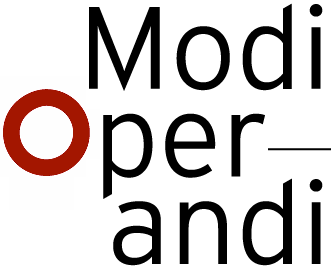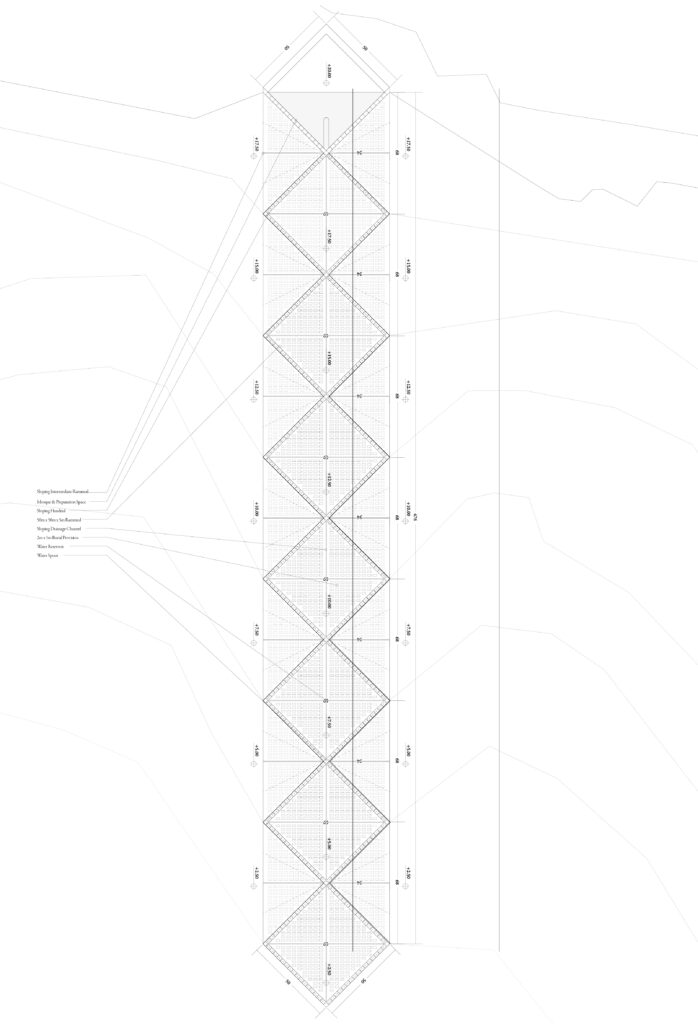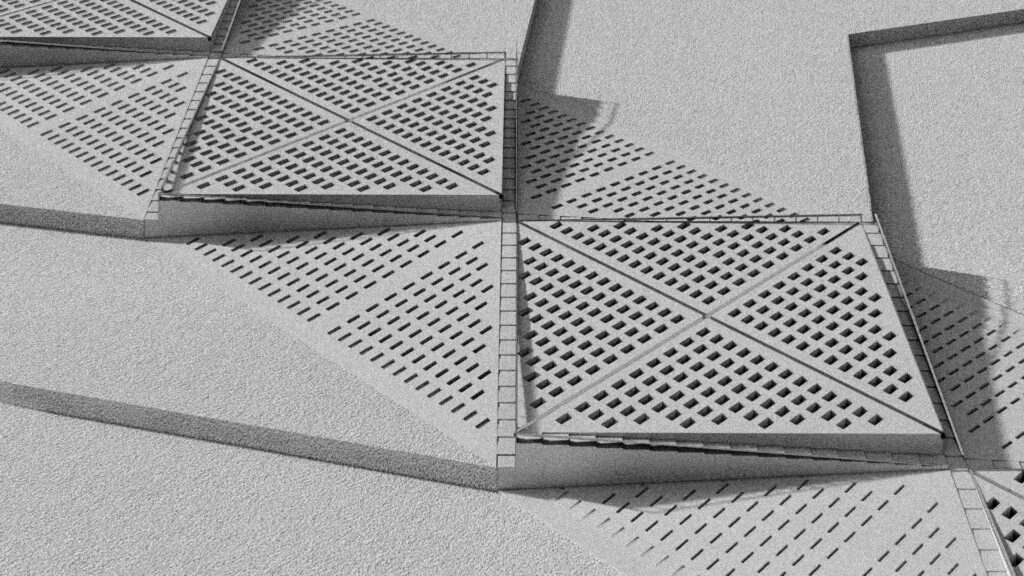CEMETERY: BARGAINING / NEGOTIATIONS
In the third architectural intervention, the stage of bargaining unfolds as a profound exploration of the regenerative potential embedded within the cycles of life and death. This intervention encompasses two distinct elements: a triangular sloping building that houses rituals of death, and a series of cemetery platforms that extend onto the landscape, reshaping the land with the infusion of decomposed bodies. Together, they symbolize the intricate dance between mortality and regeneration.
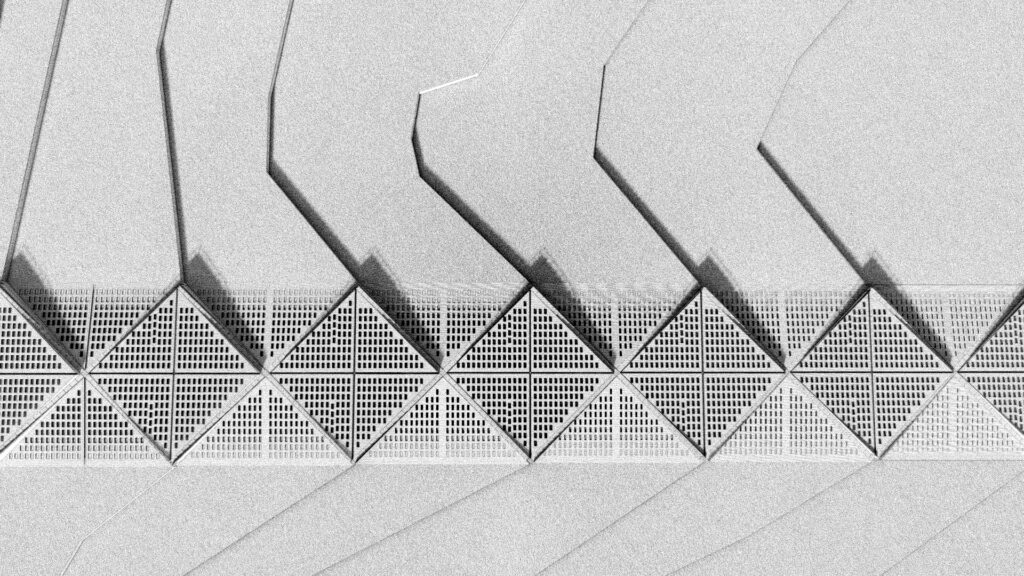
As visitors approach the cemetery, their gaze is drawn to the triangular sloping structure that postures as a sanctuary of rituals surrounding death. Within its walls, sacred rituals take place, including prayers, body preparation and wrapping, honoring the departed and their journey onto the next phase of existence. Adjacent to the building, a series of cemetery platforms are placed, cascading down the landscape on different levels. These platforms offer a resting place for the departed, creating a visual testament to the interconnectedness of life and death. Each platform serves as a symbolic bridge between the earthly realm and the realm beyond, inviting visitors to contemplate the transient nature of existence and the eternal cycles of regeneration.
The intervention reshapes the initial condition of the land, infusing it with decomposed bodies and activate the soil. By reintroducing organic matter into the landscape, the intervention acknowledges the inherent connection between death and rebirth. The decomposed bodies, carefully prepared and placed within the cemetery platforms, become agents of regeneration, enriching the soil with vital nutrients and fostering the growth of new life. The intervention’s symbolism aligns with the essence of the bargaining stage of grief. It represents a profound attempt to negotiate with the transformative forces of life and death, offering the deceased as a bargain for the regeneration of the landscapes. In other words, it reflects the desire to strike a balance between loss and renewal, seeking solace in the belief that through such offerings, nature will respond with the gift of rejuvenation.
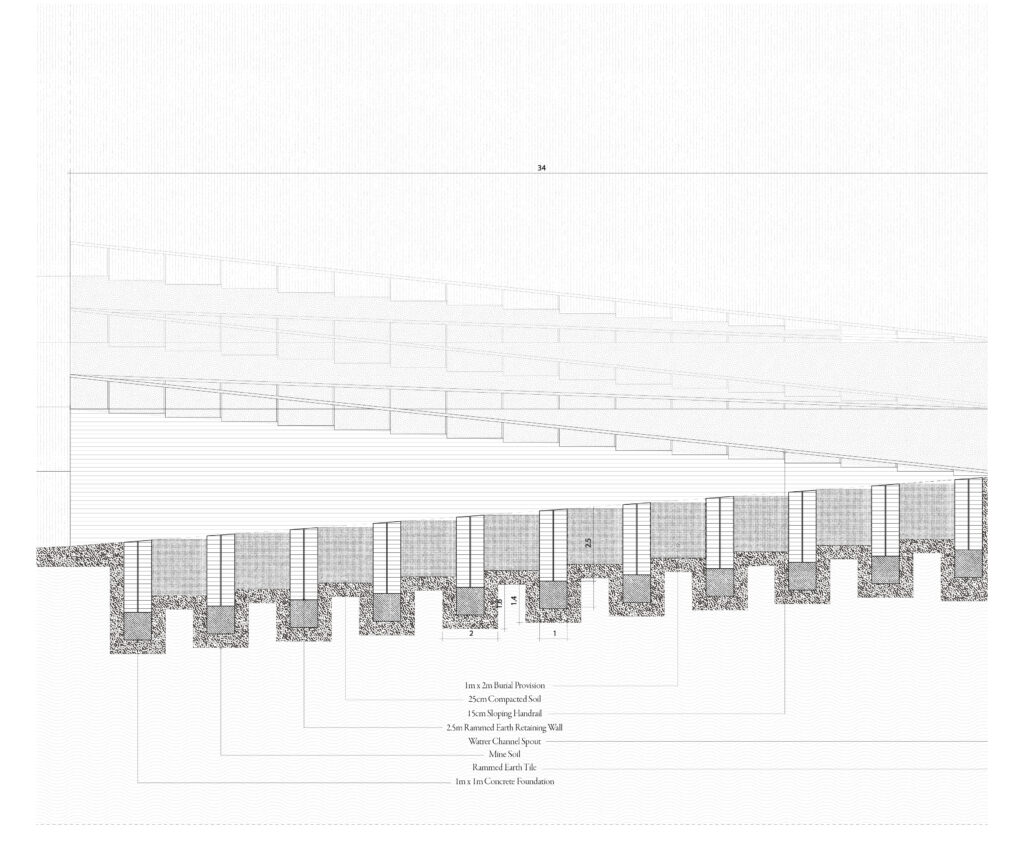
This terraforming exercise served as a reminder that life and death are intertwined, and that the potential of renewal and regeneration is a real feature for this site’s project. The intervention then fosters a dialogue concerning the delicate balance between mortality and regeneration, as well as the transformative power of honoring the deceased as an offering for the land’s rebirth. Through this intervention, the project acknowledges the intricate relationship between grief and the natural world. It celebrates the resilience of life in the face of loss and reminds us of the cyclical nature of existence. By embracing the stage of bargaining and offering the deceased as a catalyst for regeneration, the intervention serves as a reminder that there is room for hope as well as a promise for renewal present in the depths of grief. The intervention thus explores the transformative potential embedded within the rituals and cycles of life and death. It represents a powerful homage to the eternal dance between mortality and renewal.
